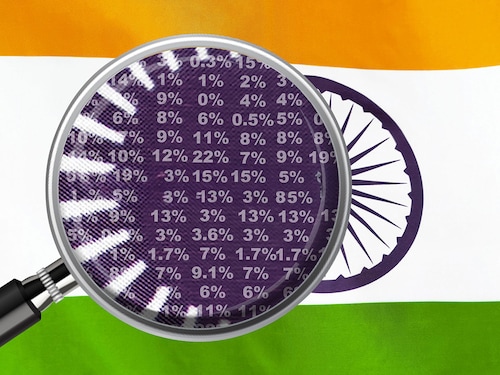The curious quirk of the base effect in inflation
A record-low inflation hit has more behind it than cheaper goods. The base effect shows how last year's prices could distort this year's story


October saw India’s headline inflation drop to 0.25 percent, the lowest figure since the current series started in 2012. This was underpinned by a fifth consecutive month of negative food inflation.
Does this, however, mean that overall prices or food prices more specifically were dramatically lower in October this year compared to last? Not entirely.
Several different factors influence inflation rates. While global commodity prices, the effect of the Indian monsoon on agriculture, global crude oil prices and money supply are key drivers among many other factors, a curious mathematical quirk known as the ‘base effect’ can also significantly alter the perceived trend in price stability.
For this, let’s first consider how inflation rates are calculated.
Inflation, which is the general increase in the price of a basket of goods and services over a period, is calculated on a year-on-year (YoY) basis, comparing the current price index to the index from the same month exactly a year earlier. Ultimately, the base effect is inherently a matter of comparison, as inflation is measured against the ‘base’ period. The inflation rate will be skewed, either up or down, based on the high- or low-price level of the reference month.
If the distortion occurs when the base from the previous year was unusually low, economists refer to it as the ‘low base effect’. And if the base was considerably high, it is termed the ‘high base effect’.
Consider the post-pandemic recovery phase. Because economies worldwide experienced sharp deflationary dips in 2020, the subsequent inflation reports in 2021 and 2022 showed steep YoY gains—simply a rebound from a severely depressed base.
What happened in October this year was the opposite of this.
Since the base price level in October last year was unusually high, largely due to elevated food prices, the corresponding rate increases this year reflected as a lower print.
Dipti Deshpande, Principal Economist, Crisil Limited, estimates that “roughly half” of the decline in the inflation rate between September and October could be attributed to a high base, while the rest “is on account of the price momentum” significantly influenced by GST rate changes, moderate global commodity prices and a favourable monsoon.
Aditi Nayar, Chief Economist at ICRA, adds that while the “one-off impact of the GST rate rejig on several items across the consumer price index (CPI) basket” resulted in a sharp fall in prices, “a healthy crop output” in the last two cropping seasons and an “above-normal monsoon” have helped contain the sequential momentum in food prices.
But despite the current low rate, the October 2026 inflation figure is unlikely to be skewed high by a low base effect. Experts believe that because CPI inflation hit its lowest point this October, the inflation rate is now expected to face upward pressure, which will likely limit further declines in food prices.
Also Read: Why targeting headline inflation is essential to control inflationary expectations
The base effect may be an unavoidable mathematical outcome of measuring growth against a historical reference point, but updating the base year is said to help filter out long-term distortions in the current index.
India is already moving in this direction—shifting the CPI base from the outdated 2011–12 series to 2022–23—and is expected to revise the weight of food as well, aligning the index with consumption patterns captured in the latest expenditure surveys.
Dharmakirti Joshi, Chief Economist, Crisil Limited, says that reducing the weight of food in inflation calculation, as it is the more volatile part of CPI because of frequent price fluctuations, could lend some “stability to inflation numbers.”
However, she adds that the current series does not capture the Central government’s free food programme, launched during the pandemic, and expected to remain in effect until 2028.
“For the new CPI series, the Ministry of Statistics and Programme Implementation has proposed including the free food scheme and other food programmes. A single index for a given food item (say, rice) will be produced, as opposed to the current practice of separate series for public distribution system (PDS) and non-PDS variants. If implemented, this will bring the consumer food price index down,” she explains.
Nayar believes that updating the base year, leading to a readjustment of weights between individual items, including new items, would be important to ensure that the CPI remains representative of the underlying consumption pattern in the economy in the recent period.
“Besides, the inclusion of new data sources such as online marketplaces and the revamping of the housing index computation would also improve the coverage and quality of the CPI,” she says.
First Published: Nov 17, 2025, 11:58
Subscribe Now